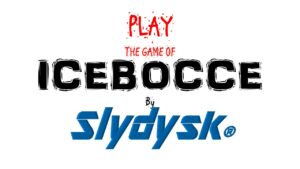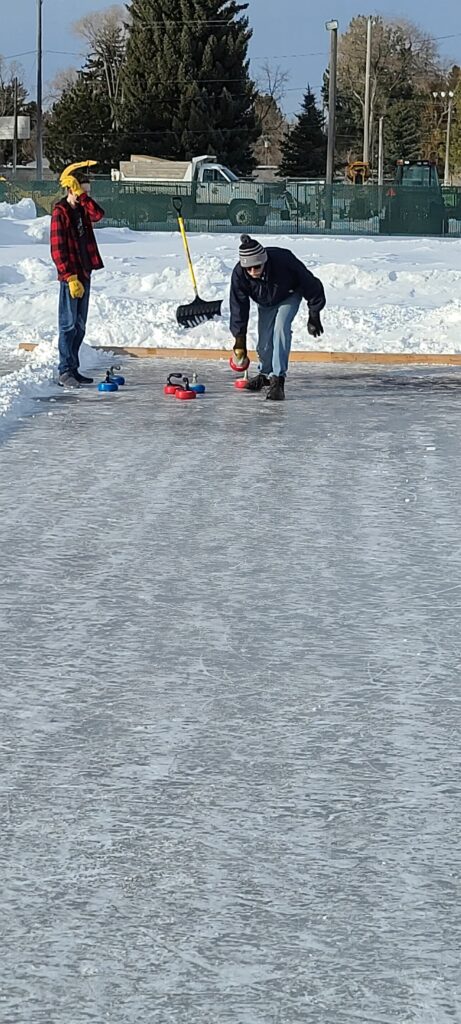Progression of Stone Throwing Social Games
The Progression of Stone Throwing Social Games
"From Stone Pebbles to Modern Resins"
BOCCE
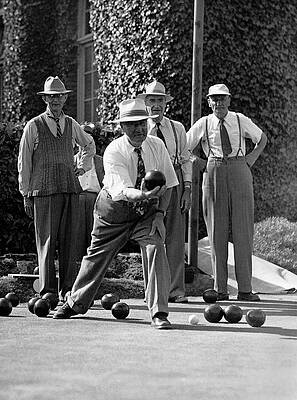
Origin: Italy in 264 BC but goes back as far as 5200 BC with the Egyptians.
Game Play: Two teams, each with four players, take turns rolling or throwing larger balls toward a smaller ball that is a moving target called a “pallino”. Each team has four balls, with each team having two players at each end and throwing two balls each. One point is given for each ball that is closer to the pallino than the opposing team’s balls. Ends are changed and the game continues until 12 points have been scored or to a pre-determined number of points set by the players before the game starts.
Playing Surface: A flat court made of decomposed granite or crushed oyster shell 13’ wide by 91’ long with side bumpers and a solid backboard, but can be played on any flat surface that is smooth.
Playing Devices: Eight larger round resin balls having a diameter of 4.2” and weighing 2 lbs. with a smaller resin ball having a diameter of 1.6” with a lesser weight. They can also be made of wood, stone or steel. Each set of balls weigh the same for both teams and the target ball is smaller and weighs less.
ICE STOCK
Origin: Germany in 1934 “Bavarian Curling” but the idea goes back as far as the 16th-century.
Game Play: In a team game, two teams try to shoot the sticks as close as possible to the “Daube” from the starting point. The stave is placed on the center cross before the start of a turn. If the stave is changed in its position within the target field by an effect that is valid according to the rules, it remains in this new position, which is also decisive for the scoring. It is returned to the center cross if it is outside the target space. There are six turns in total. This is one of three variations that can be played. Other are team target shooting and distance competition.
Playing Surface: A sheet of natural outdoor ice or an ice rink with specific dimensions, lines, and area markings.
Playing Device: The ice stock stick is similar to curling stones, but lighter and made to slide along ice with swappable bottoms to increase or decrease their speed with a 30m stick attached.
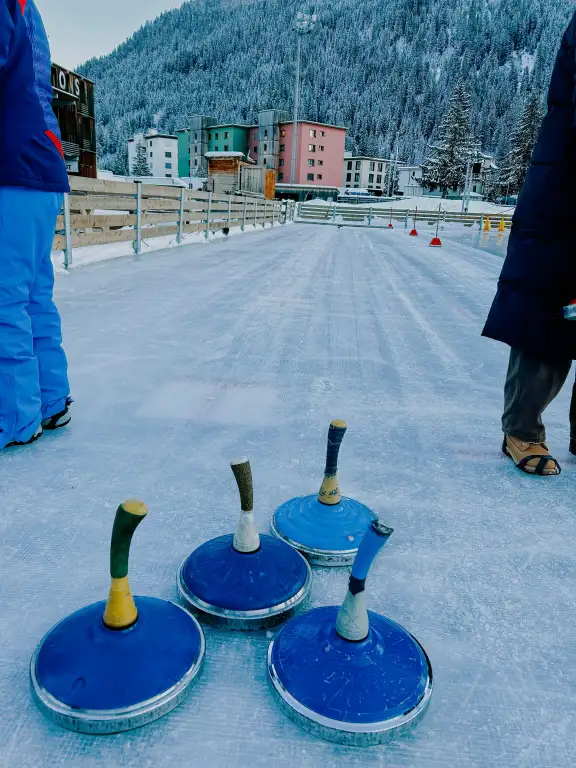
CURLING
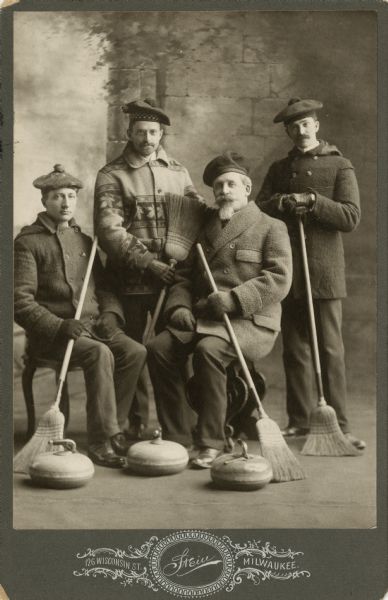
Origin: Scotland in the 1600’s but notoriously a Canadian pastime.
Game Play: Two teams, each with four players, take turns sliding heavy polished stones, also called “rocks”, across an ice curling sheet towards the house, a circular target marked on the ice. Each team has eight stones, with each player throwing two. The purpose is to accumulate the highest score for a game; points are scored for the stones resting closest to the center of the house at the conclusion of each end, which is completed when both teams have thrown all their stones. A game usually consists of eight or ten ends.
Playing Surface: A pebbled ice sheet 15’ wide and 146’ long with sideboards and backboards.
Playing Devices: Sixteen heavy granite stones having a circumference of 36” and a height of 4.5” weighing 40 lbs. with a solid plastic handle that allow you to throw the stone. There is the use of brooms to help glide and curl the stones into place.
BOWLING
Origin: Britain in 1934 but goes back as far as 3200 BC with Egyptians.
Game Play: A game of ten-pin bowling is divided into ten rounds (called “frames”). In a frame, each player is given two opportunities to knock down the skittle targets called “pins”. The player rolls the first ball at the pins. If the first ball knocks down all ten pins, it is called a “strike,” and the frame is completed. The purpose of the game is to accumulate the highest score while trying to get a perfect score of 300.
Playing Surface: A lane of 39 strips of smooth waxed wood 42” wide and 60’ long with gutters on each side.
Playing Devices: A round resin ball having a hardness of 72 on the Type D Shore durometer with a circumference of 27” and a diameter of 8.5” weighing 16 lbs., with holes for your fingers so you can curve the ball and ten target pins that are 5” in diameter, 15” tall and weighing 3.5 lbs.
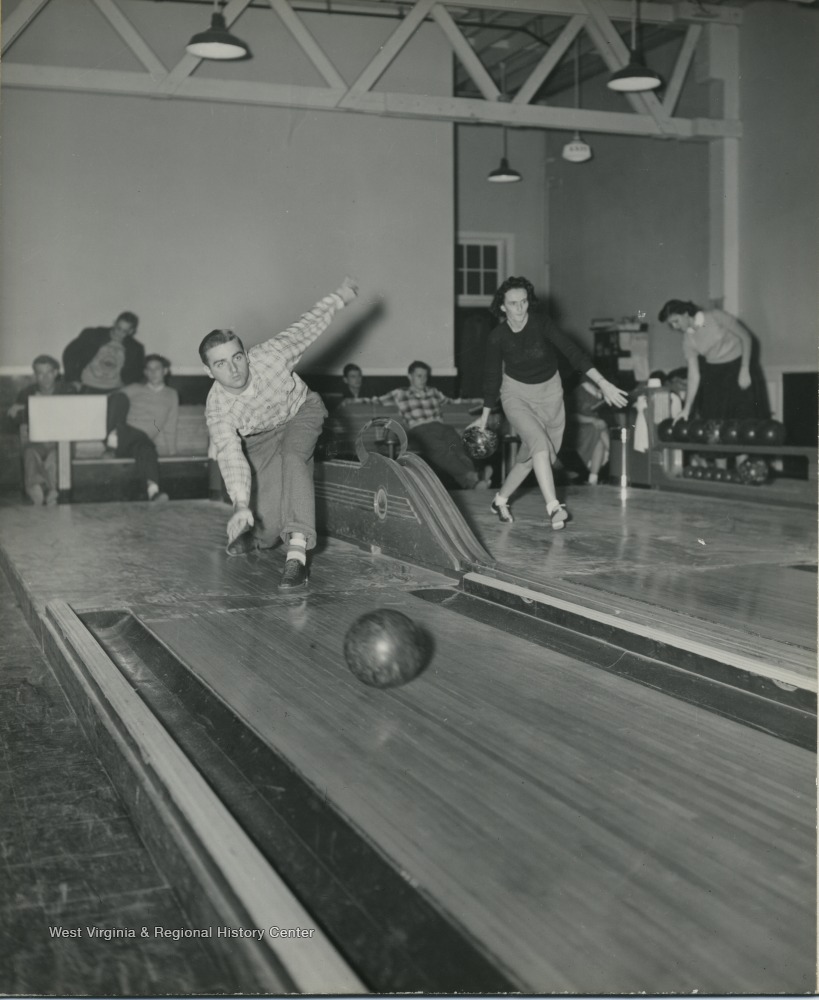
CROKICURL
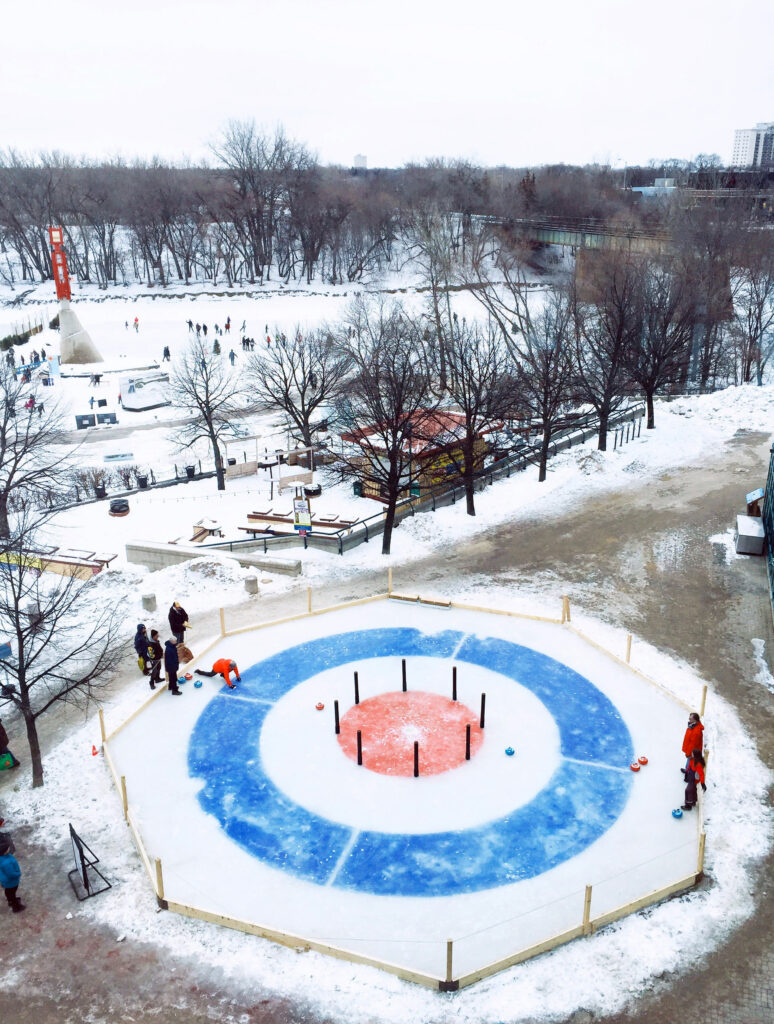
Origin: Canada in 2016 but the idea goes back as far as 1860 as the popular board game of crokinole.
Game Play: The object of the game is to score the most points in an end (round) or match. Points are determined by where the rocks land after an end. The closer the rocks are to the button, the higher the assigned points. A rock landing in the button scores twenty. A rock touching any portion of the red ring scores 15. A rock touching any portion of the white ring scores 10 and a rock touching any portion of the blue ring scores 5.
Playing Surface: The crokicurl “rink” the court is a 42-foot-wide octagon-shaped ice playing surface divided into four quadrants as delineated by breaks in the blue ring.
Playing Device: In crokicurl, rocks are used instead of discs and its rocks are roughly the size of a curling stone. The game uses junior curling stones which are 15 – 25 lbs instead of 38 – 44 lbs for regular curling stones.
ICEBOCCE
Origin: United States in the 2017 but definitely a stone age game.
Game Play: Two teams, each with four players, take turns sliding larger disks, also called “dysks” across an ice court toward a smaller disk that is a moving target called a “jack”. Each team has four dysks, with each team having two players at each end and throwing two dysks each. One point is given for each dysk that is closer to the jack than the opposing team’s dysks. Ends are changed and the game continues until 12 points have been scored or to pre-determined number of points set by the players before the game starts.
Playing Surface: A smooth ice court 13’ wide by 85’ long with side bumpers and a solid backboard, but can be played on any hard, smooth surface.
Playing Devices: Eight larger resin dysks having a hardness of 70 on the Type D Shore durometer with a circumference of 21”, diameter of 6.5” and a height of 2.5” weighing 3.5 lbs. with a flexible handle that allows you to throw the dysks and a 5 oz hockey puck for the target dysk called a “jack”.
